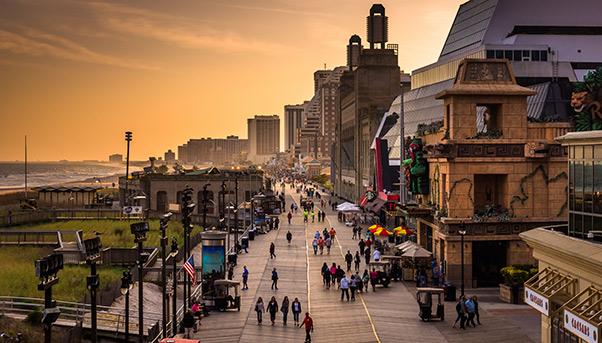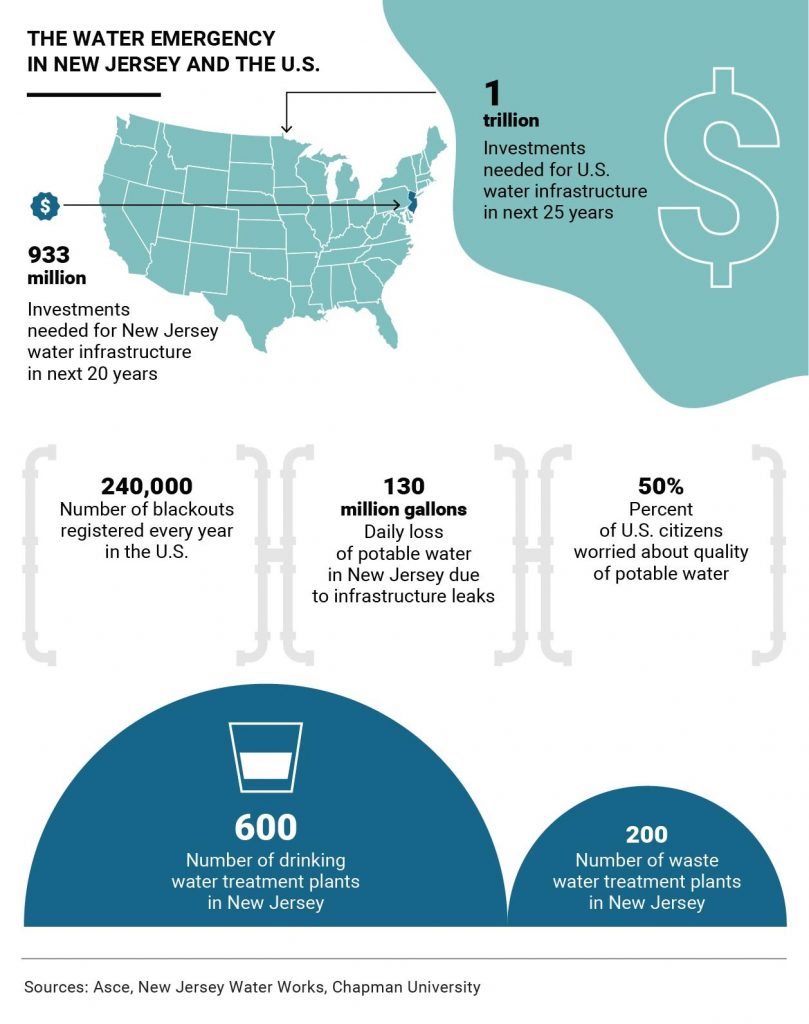
An unprecedented water shutdown: drinking water supply was interrupted 12 times in a single day in early January in Atlantic City, immediately shining a spotlight on the dire situation of New Jersey state’s water infrastructure.
The incident was the area’s worst in terms of length and interruption of service, but it was not the first time a break in the water main created inconvenience for residents and forced the city and state to make emergency interventions.
«In a huge week, we deal with three», Bruce Ward, the director of the Municipal Utilities Authority of Atlantic City, told the press January 6 as teams struggled to fix the breaks. «In the history of the staff and memory, we have never had as many as we have right now».
But after a glance at the numbers, what happened in Atlantic City should not come as much of a surprise. The American Society of Civil Engineers (ASCE) estimated last year that New Jersey needs to invest $933 million in its drinking water infrastructure to meet the needs of its citizens in the next 20 years. The alarm was sounded last December by the New Jersey Water Works (a group of 350 experts who have been studying the state’s water system for the past two years) in a report called “Our Water Transformed. An Action Agenda for New Jersey’s Water Infrastructure”. The study takes an in-depth look at the water system. And what it finds is not encouraging.
New Jersey’s water crisis: The Quality of infrastructure
The report by the New Jersey Water Works estimates that 130 million gallons of drinking water is wasted each day because of cracked water mains, leaks and water loss in the water infrastructure. Immediate repairs could save at least 50 million gallons per day, which is enough to cover the daily needs of 700,000 residents.
On the other hand, the state has a well-equipped infrastructure (200 waste treatment plans and 600 drinking water management facilities), but that only increases – not decreases – the need for maintenance.
«New Jersey’s water infrastructure has been held together patchwork-style for a long time», said ex-governor James Florio in the report. «And while the costs of fixing the problem are high in the short term, the costs of doing nothing will be far higher in the long term».

The New Jersey state government took action last July with the Water Quality Accountability Act, which went into effect in October, and sets a series of quality and management standards for water infrastructure. Respecting these standards will force the state and local administrations to take urgent measures to improve the water network.
New Jersey’s Water management: a nation-wide emergency
Even though it is an extreme example, New Jersey’s water network conditions don’t differ widely from the average in other American states, which will all be forced sooner or later to put the spending necessary to fix the problem on their political agenda. Hurricanes caused serious flooding in 2017 in several cities including Houston. In Ohio, poisonous algae in Lake Erie threatened to taint the drinking water for 300,000 people. In Flint, Michigan, three years of failed attempts have not been able to halt the lead contamination in the city’s tap water.
New Jersey Water Pollution: Is It contaminated?
A study published by Chapman University published in 2017 shows that 50% of US citizens say they are afraid that their drinking water could be contaminated. The alarm is spreading and confirms the need for urgent measures on a national scale. The ASCE calculates that the United States will have to invest $1 trillion in its water network in the next 25 years. In its analysis of the national water network, the ASCE confirmed that it is out of date and is in urgent need of maintenance and development. Water is supplied to American families through 1 million pipes. Many of these, says the ASCE, were built as early as the 1920s. There are 240,000 water shutdowns in the United States each year. These incidents result in huge waste, that – along with the increase in drought and flooding – increase the problem’s severity and call for urgent action.

